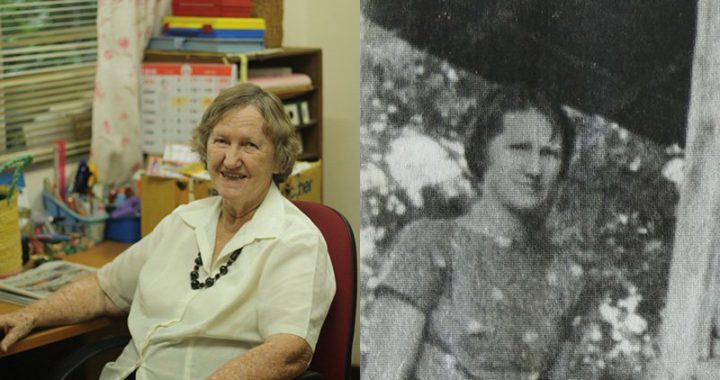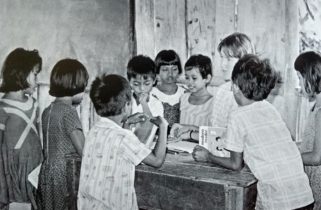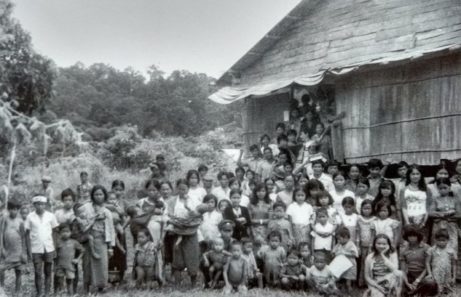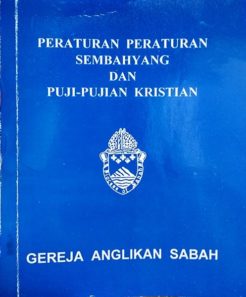Pastor Sylvia Jeanes (also known as “Ibu Suria”) was sent in 1967 by the Church Missionary Society Australia as a missionary teacher to Sabah, where she has faithfully served for the past 51 years in many different roles. In the first part of an interview at Rainbow of Hope, her school in Kota Kinabalu, she spoke about her childhood, how she became a Christian, and how she answered the call to overseas missionary service. In this second part, she talks about her years in Tongud. She encountered many difficulties as a teacher, principal and lay chaplain to the Kinabatangan, but also experienced personal revival and witnessed such spiritual revival spread through the churches in the interior.
Q: Could you tell us a little about your journey to Tongud?
On 31 August 1967—Merdeka Day—I sailed on the Straits steamship Kimanis from Tawau to Sandakan. Bishop Koh and I got on the Resident’s launch there but when he found a friend who had a speed boat he left me alone and went to Lamag with him. I sailed on the launch nervously because I couldn’t speak BM. My anxiety continued all day until we stopped at Sukau for the night. The ship’s deckhand noticed I had eggs in my lunch box so he asked if I wanted the eggs boiled. I didn’t know what he was saying so I broke down in tears! Also I didn’t know what to do for the night. Lots of people were bathing in the river so he asked if anyone spoke English. Fortunately a man did and he was able to hear all my anguished questions. So I slept in the bow under the deck away from prying eyes alone.
Next morning we sailed on to Lamag and met Bishop Koh. We transferred straight into the mission jongkong for the rest of the journey which was another two nights staying at timber camps along the way. We finally reached Tongud on the night of the fourth day of the journey. All the boarders together with Sister Elliott and Miss Merryweather welcomed me to Tongud where I was to stay for nearly 20 years.
Q: What was the most significant period during these 20 years you spent in Tongud?
The revival in 1973-1974 really changed things. Before that, to the extent which the school and clinic were flourishing, the church was floundering for a number of reasons. One was that Bishop Koh ordered that the Holy Communion service as translated by Revd Puntang at Sapi also be used in Tongud. It wasn’t understood that the languages of the two areas were very different, so only a few people in Tongud really understood it. As a result, what happened in church was totally irrelevant to life, and attendance declined. Also, the catechists were generally left unsupervised and so wrong and inadequate doctrine was taught, such as that the souls of the departed Christians go to Mount Kinabalu.

But I can only tell the story of the revival from a personal point of view. We had a teacher in Tongud called Chin Fon Yung, from the great Chin family in Labuan. She wanted very much to be a missionary, but Bishop Koh said, “Finish your time in government first, then I’ll consider you.” She did her five years in government schools, then Bishop posted her to Tongud in January 1972. In her first month or so, Miss Merryweather was there and taught her how to be principal. But on 29 July that year, she drowned while bathing in the river. Very, very tragic. I was in KK at the time and the message came through: “Ms Chin drowned.” Archdeacon Briggs and myself went to Labuan that afternoon for the funeral. He asked me to take over the school. We had to pick up the pieces and just carry on. It was never my intention to become principal of a school! I’m just happy to sit in the back row and be a teacher. I’m too shy, too quiet. But God had given me gifts and I was ready.
Q: What was it like when you took over as principal?
We sunk into a depression. The sadness of losing our principal just seeped into the very soul of the school. I remember walking on the path going home one afternoon thinking to myself, “I’m sure God did not mean us to be this unhappy.” I met up with some SIB missionaries who lived in Lawas and they said, “Why don’t you come for a holiday in Lawas?” So I went there in December 1972.
In Lawas, the missionaries had been personally seeking the Lord, and God had touched them marvellously by the Spirit. At that time the Neo-Pentecostal Revival was going across the world. Peter Young was a CMS man in West Malaysia who set up Malaysian Care. He’d been at a conference in the East Peninsula with Roman Catholics. And he drove back with the Catholics who told him their experiences. Peter was like me—very depressed, very empty and very dry. When he got back to his office, he got down on his knees and prayed, “Lord, please do something in my life.” And right there and then on the spot God came to him and touched his life and transformed him.
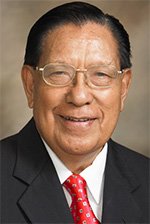
Dr Petrus Octavianus
Q: That’s amazing.
Yes. I was in the same situation. When I got to Lawas, my friend said, “Oh, I’ve got a tape here from Peter Young. You want to hear it?” “Oh, yes,” I said. As soon as I heard Peter’s testimony I said, “Oh, Lord, that’s what I want so much. I want You to touch my life and transform me just like you’ve done for Peter Young and those Catholic priests.” I was supposed to fly back to KK on Saturday afternoon, but it rained cats and dogs, and the flight would not land. So, I was forced to come back to SIB Lawas. But that was the time of the biennial conference for all the church leaders from all over the SIB: Kayan, Iban, from the mountains too. God had been already at work among these people in the most amazing way: transforming their lives, doing miracles among them. Anyway, I hadn’t expected to go but went because I was there that Sunday. The speaker was Dr Petrus Octavianus from Malang, Indonesia. He spoke of the five great revivals of the previous century. I was so touched. Now, SIB really protect their speakers, and Dr Octavi was being taken out of the meeting, but the amazing thing was that he stopped in front of me and said, “Hello, sister.” That touched me.
In the afternoon, people started coming up on stage to confess their sins. He said, “Name your sins (Namakan dosamu)!” So they were forced to actually speak out what their sins were. That was a marvellous experience. The other thing they did was this: “Let us pray aloud together (Mari kita berdoa bersama-sama dengan suara kedengaran).” Huh? Everybody praying together? Not praying out of a book? Everybody was praying in Malay, and I began to hear these recurring phrases: “Praise the Lord (Puji Tuhan)!” “Thank you, Heavenly Father (Terima kasih, ya Bapa in Syurga)!” I couldn’t believe it. When I went back in the afternoon, I prayed, “Lord, please touch me like you’ve touched Peter Young, these people all over Sarawak and all over Indonesia.” Well, it was the most amazing experience. It was like the Lord walked Himself into the room and just touched me, transformed me just like that. [clicks fingers] My tears and darkness vanished and in came the joy of the morning, like the Bible says.

Revd Dennis Bennett
I came back on the plane to KK . I couldn’t stop praising the Lord, saying, “Puji Tuhan. Terima kasih, ya Bapa.” We were staying in KK with one of the nursing teachers. And she said, “I don’t know what’s happened to Sylvia.” And Marianne said, “I don’t know what’s happened to her either.” [laughs] I’d been sent some books like Michael Harper, Spiritual Warfare; Dennis Bennett, Nine O’Clock in the Morning—all those 70’s classics. I started reading those avidly. By the time I got to the end of Dennis Bennett’s book—he was an American Anglican—I said, “This speaking in tongues is just so normal and natural.” I remember praying one night in Malay, and then just going off into another language completely. It was amazing, I couldn’t believe it. The next day I kept speaking this language over and over again. I just felt I was in a honeymoon with God.
Q: Wow. And how did this spread?
Just like in the SIB, the children were the first ones to be touched with the Holy Spirit. On Sunday night, we used to have a sing-song from the old Ancient and Modern hymnal. We’d sing, then I’d have a primary Six boy say the closing prayer. He would mumble something, everybody would say, “Amen,” and we’d all go off to bed. Then we changed it. I asked, “Do you want to pray?” Everybody put their hands up. “Okay, marilah kita berdoa bersama-sama dengan suara kedengaran.” Wow, the kids just took off. Unbelievable. They started praying and praying. Like in SIB, they’d be praying for their teachers, praying for their parents. We used to have a Primary Six Scripture class at my house. I’d say, “Before we learn from the Bible, let’s have a time of worship.” Well, they prayed in their own mother tongue, we sang songs to the Lord. It was unbelievable. And then that spread out to all the others in Tongud and the Kinabatangan.
Q: Incredible. What was the church like during the revival?
Now, at that time we had only [Revd] Lawrence Lawin as priest for the whole of the Kinabatangan and the Labuk. So Bishop Chhoa licensed me as the Assistant to the Chaplain, who was Lawrence. I was in charge of 20-odd churches in the Kinabatangan. We only saw Lawrence once every three months when he came to do Holy Communion. Bishop was willing to license me to do the Holy Communion, but I said, “No, what these people want is the teaching from God’s Word. And that’s what I’m going to give.” So, Sunday after Sunday, I preached all over.
I also wrote a liturgy, because we didn’t have one that could be used without a priest. I had just finished my Licentiate in Theology, including a course on Prayer Book with Dr Leon Morris in Melbourne. So I was quite up-to-date with liturgical developments and felt I could write a liturgy for our people. I decided to call it “Kinabatangan Use” [laughter] based on the medieval term, “Sarum Use.” I put it through the leaders first then sent it to Bishop Chhoa for approval. It incorporated as much of the Holy Communion service as possible but had bits that replaced the prayers which only a priest could do. That’s what became the basis of the “Blue Book.” We’re still using it until now for that kind of service.
Q: The liturgy is a blend of Holy Communion and Morning Prayer, isn’t it?
That’s it. We had to put a liturgy together that was still Anglican in its hallmarks—with the congregation involved, not like SIB—but could be used by church leaders without a priest.
Then I started the first Lay Leaders’ Training course in 1974, just for our area. A lot of those people have died now, but we brought together leaders who’d never met before. They were all sharing: “How is it in your congregation? What’s happening there? What are your problems?” I empowered those folks to bring the message back, and they did. I also wrote sermons every week and sent these to them as a fall-back.
I felt the best way forward was to train and empower local people to do things. Obviously I couldn’t look after all the churches myself. There were about 12 at the beginning and, I think, 22 at the end. Also, I’ve always been aware of being a different race with a different way of thinking. Locals have the language, the sympathy of the people, and the understanding of the culture, and so they do things much better!
In the next and final part of the interview, Ps Sylvia speaks about her experience as a lecturer at the Sabah Theological Seminary and unexpectedly setting up the Rainbow of Hope alternative learning centre for migrant children who lost their access to public education.

